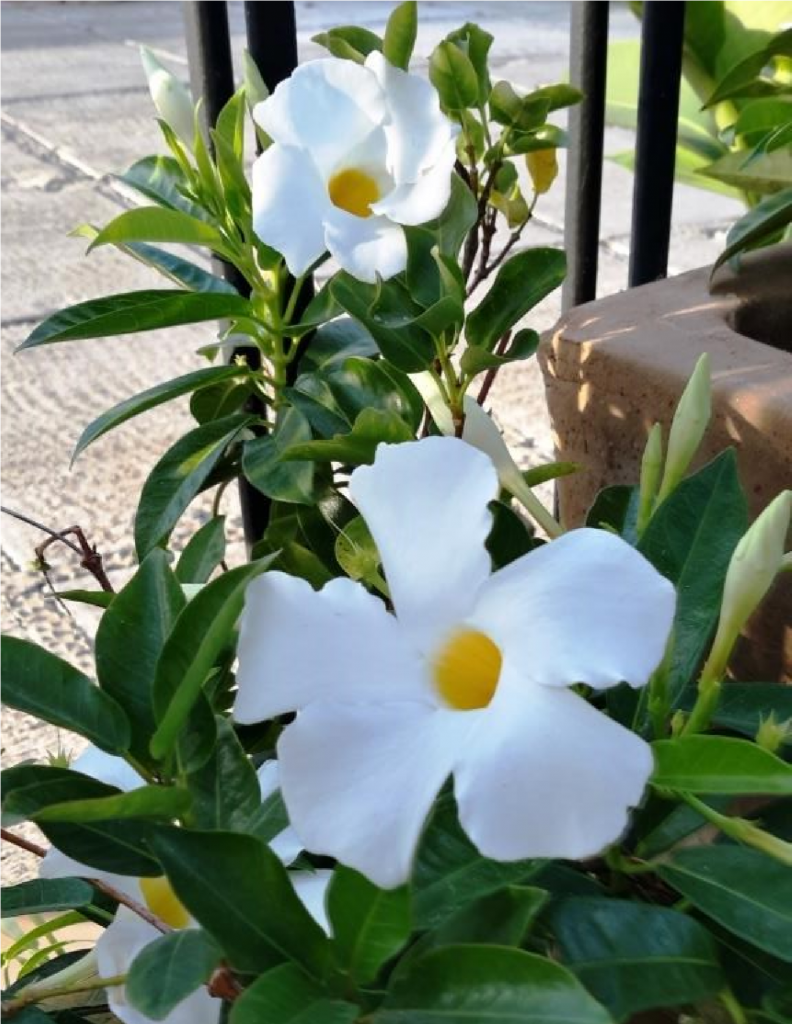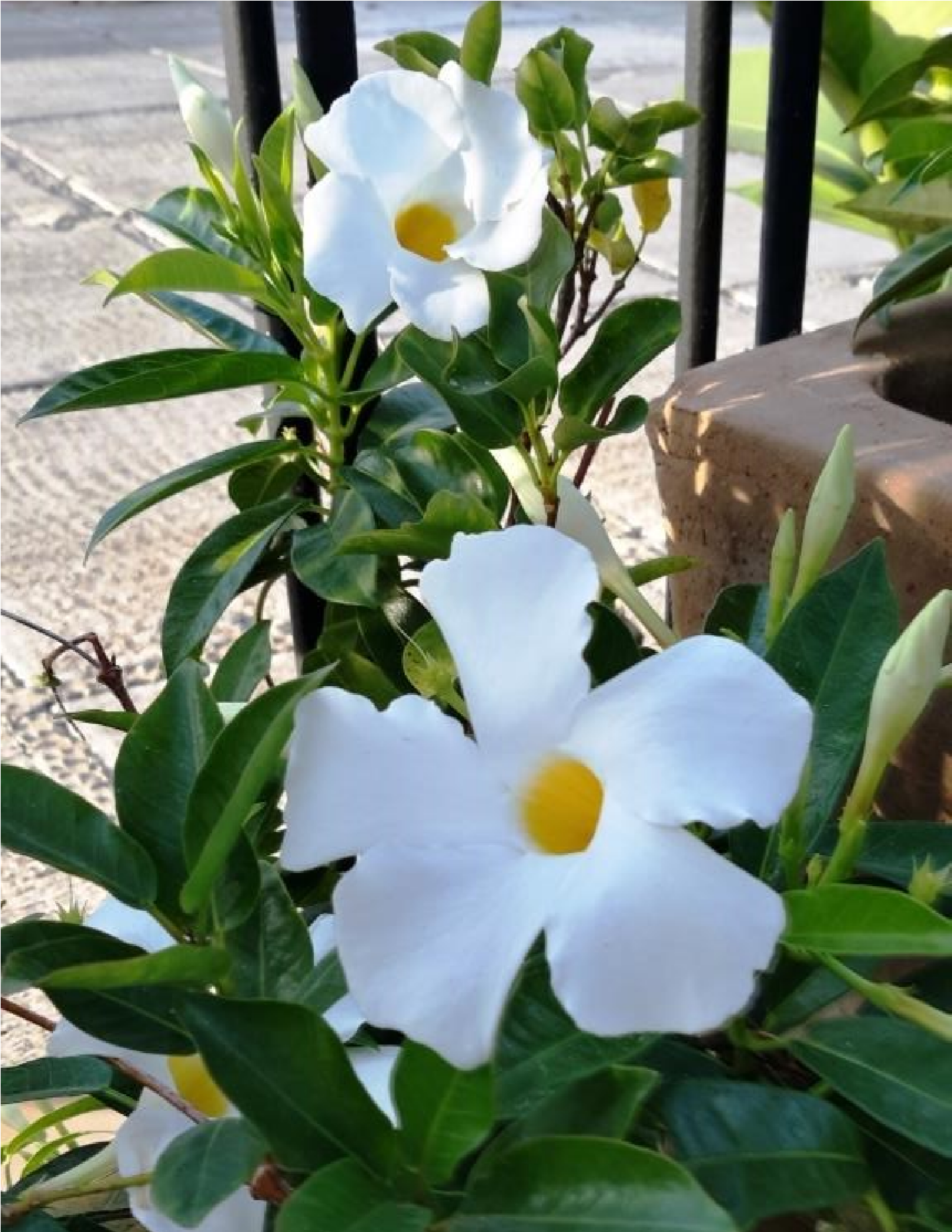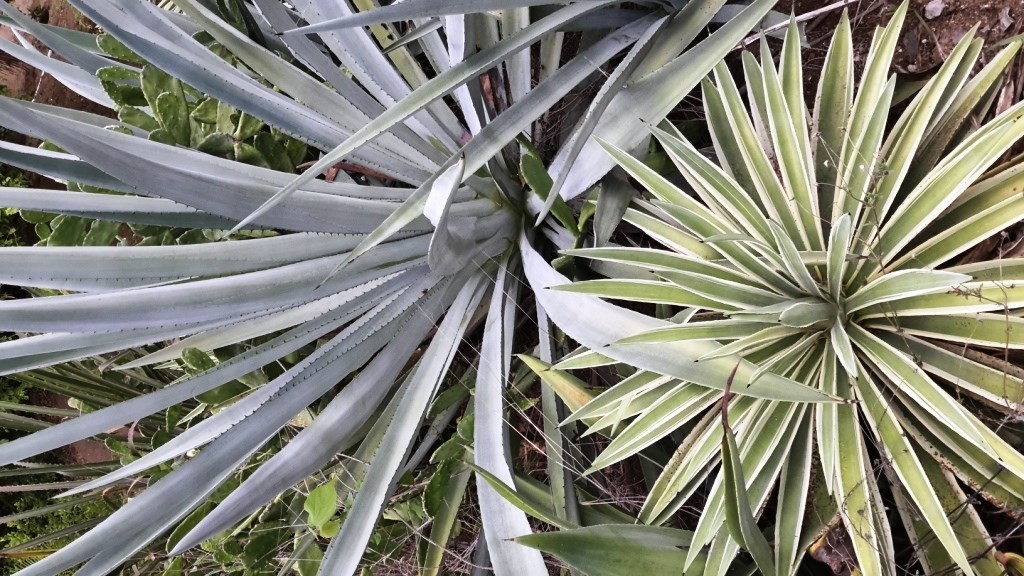By Tommy Clarkson from the December 2018 Edition
Mandevilla Boliviensis
Family: Apocynaceae
Also known as: Mexican Love Vine or White Dipladenia
Many are familiar with the red or pink Mandevilla, but, for whatever reason, there doesn’t seem to be as much recognition or discussion on the wonderful white ones.
Ours thrive from a faux (fiberglass) “hollowed out coconut log” we designed for that very purpose on the southern side of our Sunrise Palapa outside our master bedroom. Its beautiful flowers and dark green foliage cascade down, framing the upper portion of our view of the Santiago Bay from our living room below.
For us, much of the fun of this plant is that the blooms seldom the leaves drop into our infinity pool below. Hence, when we swim we feel a bit like Dorothy Lamour in the old Bing Crosby and Bob Hope Movie “Road to Bali” where she bathed in a pool resplendent with large blossoms. (I know, my young readers, you have no idea of what I speak just trust me on this one!)
Originally from the Bolivia and Ecuador region, this evergreen vine climbs and clings sort of like a neurotic yet needy young
socialite I knew many years ago up to around twelve feet (3.66 meters). Preferring moderate moisture, it blooms much of the year in fertile, well-draining soil. It likes full to partial sun, with a preference to filtered sun in the hot season.
Now, as to those flowers! They are perfectly white, trumpetshaped, yellow-throated and up to two inches (5.08 cm) wide. The nicely contrasting leaves are elliptic, glossy, veined and grow up to four inches (10.16 cm) in length.

They are perfectly white, trumpet-shaped, yellow-throated and up to two inches (5.08 cm) wide.
(And – “Oh, by the way, many ask what plant they might have around their homes on the ocean’s shore. This is a great one for such a location.)
This woody stemmed, tropical vine enjoys making its home on a trellis which well showcases its flowers. But, wherever it grows, be aware that pruning can help shape and form the plant to its optimum appearance. Also, one can pinch back tips of new shoots to in order to promote bushier growth. But, remember that, when cutting stems, watch out for the milky sap as it is a potential skin irritant and, if ingested, may be toxic. These Mandevilla have no serious disease or insect problems but might, once in a while, possibly be bothered by scale and mealybugs which can be fast resolved by use of an insecticidal soap.
Inasmuch as it is a prolific flowerer, I encourage regular applications of fertilizer. The application of an all-purpose plant food – every two to three weeks during the spring and summer – will encourage health, vitality and quantity of the blossoms. But what kind, you ask?
Mandevilla, like most young plants, appreciates extra phosphorus which encourages healthy root development. Accordingly, seek out a fertilizer with a larger second number in its content designation, ensuring that you apply the recommended amount as described in the label directions. Along with this, know that fertilizers that are high in nitrogen promote good leaf growth. But, remember, excess nitrogen in the soil can also cause excessive vegetative growth at the expense of those flowers.
As the root system for this species originated under hot, arid conditions, it is able to hold enough water to keep the plant well hydrated for extended periods. So, ensure that the soil around the plant is completely dry before watering again. (I heartily encourage use of a hydrometer.) Another indicator of when to water is when the glossy, green foliage begins to look a bit dull. When watering, give the roots ample time to well absorb the moisture. Simply stated, the key to watering is to do so deeply and less frequently.
The full edition or view it online
—
Tommy Clarkson is a bit of a renaissance man. He’s lived and worked in locales as disparate as the 1.2 square mile island of Kwajalein to war-torn Iraq, from aboard he and Patty’s boat berthed out of Sea Bright, NJ to Thailand, Germany, Hawaii and Viet Nam; He’s taught classes and courses on creative writing and mass communications from the elementary grades to graduate level; He’s spoken to a wide array of meetings, conferences and assemblages on topics as varied as Buddhism, strategic marketing and tropical plants; In the latter category he and Patty’s recently book, “The Civilized Jungle” – written for the lay gardener – has been heralded as “the best tropical plant book in the last ten years”; And, according to Trip Advisor, their spectacular tropical creation – Ola Brisa Gardens – is the “Number One Tour destination in Manzanillo”.




